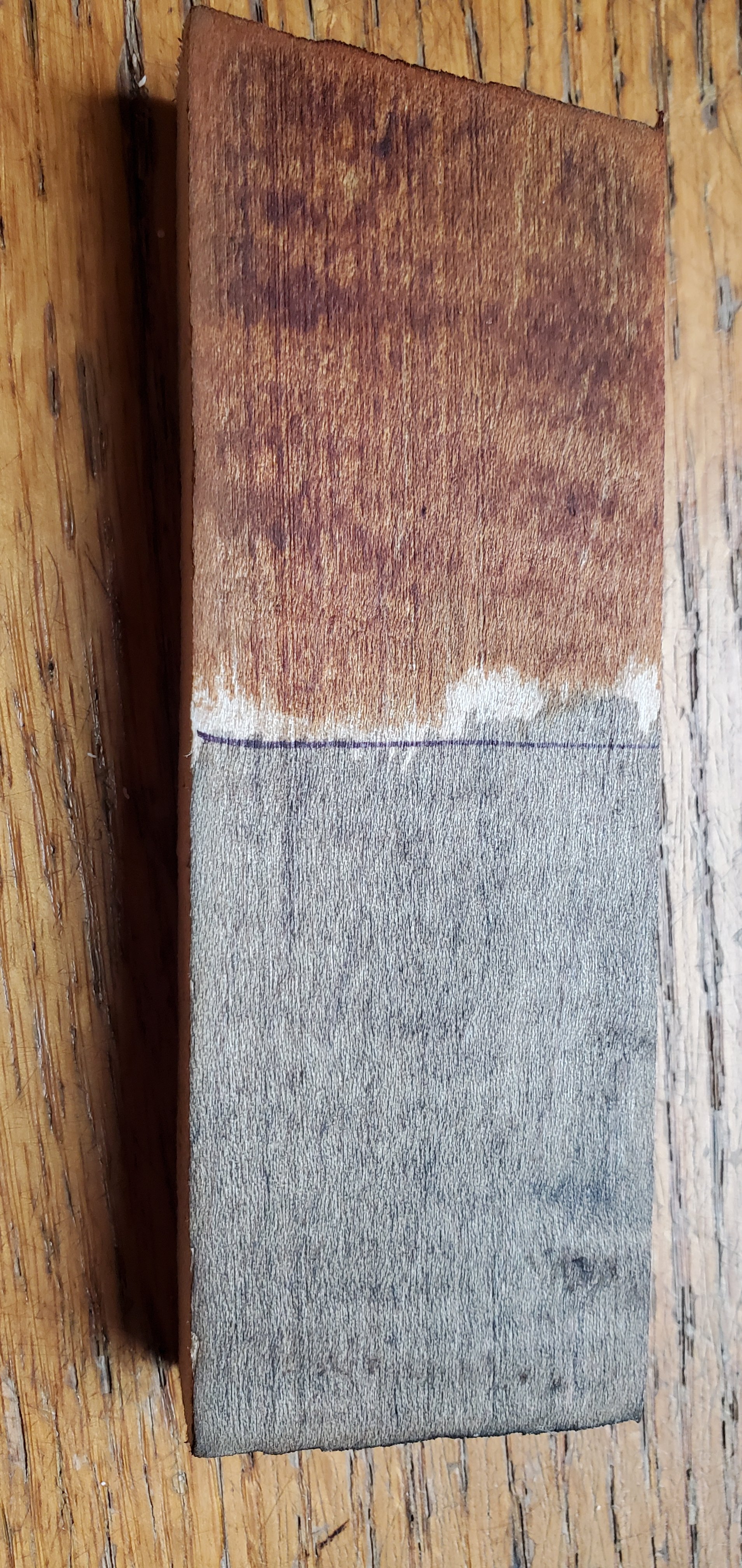Trapper1993
40 Cal
- Joined
- Nov 17, 2020
- Messages
- 102
- Reaction score
- 68
Heard about people using a vinegar & steel wool stain for rifles but couldnt find any pictures of it online. Put 000 wool and vinegar in a cup for a week, occasionally stirring it. After the vinegar turned a reddish brown color like tea it was ready. I used a coffee filter to filter out the remaining bits of metal. I used a piece of semi curly maple to test the stain out. The top part is regular aquafortis. The bottom is the vinegar solution. I did dilute it a small amount before applying the stain. Overall, I wasn't really impressed. I was expecting something like a light brownish color but got a grey stain with a hint of brown.















